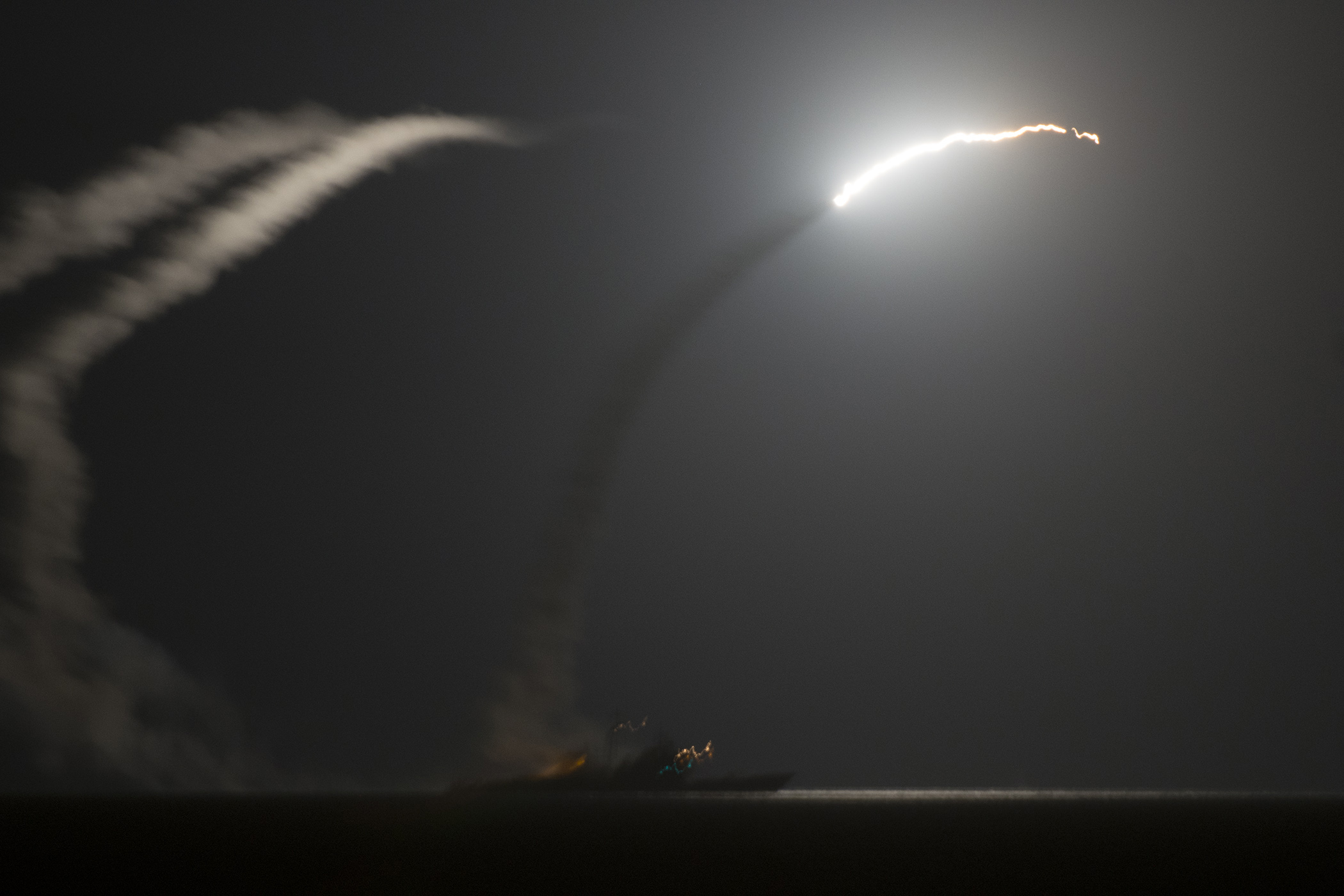
SAN DIEGO – Any U.S. Navy ship or submarine capable of firing a Tomahawk Land Attack Missile (TLAM) could be armed with an 1000-nautical mile anti-ship cruise missile in less than a decade, service officials told USNI News on Wednesday during the West 2016 conference.
Included in the Fiscal Year 2017 budget request to Congress is a $434 million ask over the next five years to modify 245 Raytheon TLAMS with a maritime attack capability, Vice Adm. Joseph Mulloy, deputy chief of naval operations for integration of capabilities and resources, told USNI News in a Wednesday interview.
“It won’t be all the Tomahawks but a good number of them coming off the line will have it,” he said.
“It’s going for surface first and the submarines will encapsulate it.”
The budget moves follows a Naval Air Systems command (NAVAIR) proved a Block IV TLAM – a long range land attack weapon — could be guided into a moving maritime target during a test in early 2015.
The Navy had briefly fielded an anti-ship Tomahawk in the 1990s but the lower fidelity of contemporary sensors made the missile risky to use at long ranges for fear of hitting an unintended target.
Following the test, Deputy Secretary of Defense Bob Work called the prospect of a modified anti-ship Tomahawk, “a game changing capability.”
According to the plan laid out in the Navy budget (and blessed by big Pentagon) the maritime attack modified Tomahawk will enter the surface force in 2021 for live testing and then trickle out to every platform that can fire the missile – currently the Ticonderoga guided missile cruisers, Arleigh Burke guided missile destroyers the Navy’s attack submarine fleet (SSNs) and the four Ohio-class guided missile nuclear guided missile submarines (SSGNs).
The modification will be part of the Navy’s recertification and life extension of older Tomahawks, which – with new FY 2017 funding for new TLAMS – will be ultimately an inventory of 4,000 missiles.
When the service was programming the FY 2017 budget – which dipped three-and-a-half percent below 2016 projections – it told the Office of the Secretary of Defense it would like to have the capability but didn’t have the funds. OSD agreed and added the line item to the service’s budget, Mulloy said.
The move not only fits into the surface Navy’s ongoing distributed lethality philosophy that seeks to improve the offensive power of the service’s surface assets as quickly as finances allow but also adds a new weapon for submarines to take on surface threats.
Both the surface navy and the submarine force have had limited missile space to take on a myriad of threats and the Navy – until recently – had invested little into new ship-launched anti-surface missile efforts . But with the increasing speed of development of both China and Russia’s anti-surface weapons in the last several years, the ability to pierce the so-called anti-access aerial denial (A2/AD) bubbles designed to keep U.S. forces at arms length has become an increasing concern to the service.
“[Along with] our surface brothers and sisters, we got to get the long-range missile so we’re not held out by that A2/AD bubble and we have the stick to hit inside,” said Vice Adm. Joseph Tofalo, commander, Naval Submarine Forces (COMSUBFOR), said on Wednesday.
“We need to diversify the kinds of targets our missiles can hit to include the introduction of an anti-ship version of the Tomahawk missile.”
The Navy’s submarines previously fielded a sub-launched version of Boeing’s Harpoon anti-ship missile (UGM-84A) but retired the line in 1997. The introduction of the anti-ship TLAM would be the first anti-surface weapon in the sub force since the Harpoons left the fleet.
News of the maritime TLAM follows Secretary of Defense Ash Carter’s announcement of the development of an anti-surface mode of the super sonic Raytheon Standard Missile 6 anti-air weapon (AAW). Combined with the Tomahawk investment, the pair will be the first new anti-surface system the service has fielded in decades.
“There’s a lot of things that we can do to make smart investments now to continue to change the calculus of our potential adversaries so as we execute the strategy they’ll wake up and say, ‘We didn’t see that one coming’,” said Vice Adm. Thomas Rowden, commander U.S. Surface Forces Pacific (SURFPAC) said on Wednesday.





